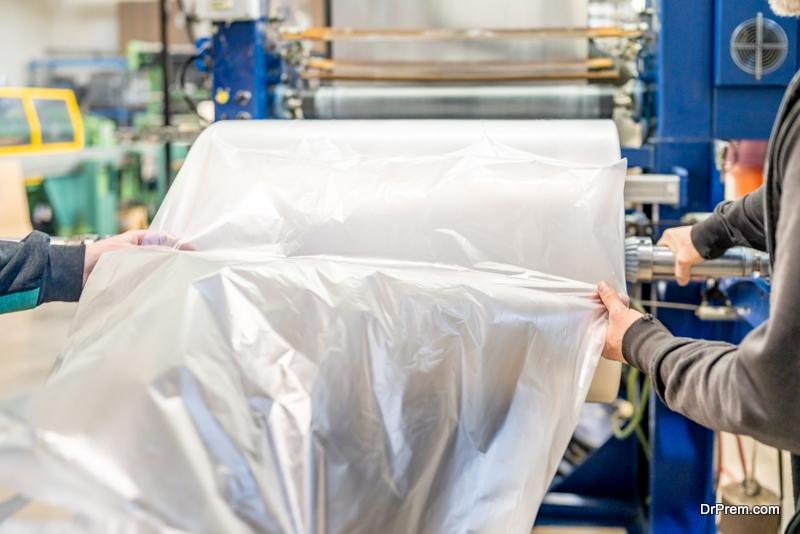Responsible business practices are more significant in this era where science points to climate change as a looming threat. One area where these business practices come into focus is packaging.
According to reports, the world produces roughly 141 million tonnes of plastic packaging annually. Around a third of all this escapes from collection systems and ends up in landscapes and water bodies, leading to environmental degradation.
This is why other packaging alternatives like Polyvinyl Alcohol (PVA) deserve a fresh eye from businesses. This article will show why PVA might just be the eco-friendly solution you’ve been waiting for. It’ll also show you how getting in touch with reputable PVA manufacturers can do good for your business’s eco-friendly packaging.
What Is Polyvinyl Alcohol?
Polyvinyl Alcohol, commonly referred to as PVA, isn’t a new discovery. It’s been around for decades, but its potential as an eco-friendly packaging material is just beginning to shine.
At its core, PVA is a water-soluble polymer derived from vinyl acetate monomer. Its unique chemical structure grants it versatile and environmentally friendly properties, which makes it a sustainable solution without compromising functionality.
Why PVA Stands Out
There are several reasons why PVA is gaining traction as a green packaging alternative:
1. Biodegradability
Unlike many traditional plastics that persist in the environment for centuries, PVA has the advantage of breaking down over time. This biodegradability ensures that PVA doesn’t contribute to the long-term pollution of our landscapes and oceans.
2. Water Solubility
One of the standout properties of PVA is its water solubility. This unique characteristic opens the door for innovative packaging applications. PVA can be a game-changer, especially in sectors where water-soluble packaging offers added convenience, such as detergent pods or bath products.
3. Resistance Properties
Resistance to substances like grease and oil is crucial, especially when it comes to food products. PVA stands out in this regard. Its inherent resistance properties ensure that food remains uncontaminated and fresh, making it an ideal choice for food packaging solutions.
4. Adhesive Qualities
Packaging needs to protect its contents and remain intact during transport and handling. PVA’s adhesive qualities come into play here. Whether sealing a package or ensuring that labels stick well, PVA’s adhesive properties are a significant advantage.
5. Eco-friendly Production
PVA’s production process is more environmentally friendly compared to many traditional plastics. Its synthesis from vinyl acetate monomer reduces the dependency on fossil fuels, leading to a lower carbon footprint. This eco-conscious production aligns with the growing demand for sustainable materials.
6. Versatility In Applications
Beyond the mentioned properties, PVA’s versatility sets it apart. Its range of applications spans from the medical field, where it’s used for drug delivery, to agriculture, where it’s employed for seed coatings. This wide array of uses showcases PVA’s potential as a multifunctional and green packaging material.
While PVA sounds promising, it’s essential to source it responsibly. Many leading manufacturers have been at the forefront of producing high-quality PVA, emphasizing sustainability.
Challenges And Limitations Of PVAs
While PVA offers numerous advantages as a packaging material, it’s essential to acknowledge its potential drawbacks and address common misconceptions:
1. Environmental Impact Of Production
While PVA is biodegradable, its production process might still have environmental implications, especially if not managed sustainably. A good example is the sourcing and processing of raw materials like Vinyl Acetate Monomer (VAM) and Ethylene, which come from petrochemical sources.
2. Water Solubility
PVA’s water solubility can be a limitation in scenarios where moisture resistance is crucial.Packaging made from PVA might not be suitable for products that require long-term exposure to humid environments.
3. Cost Implications
The production of PVA can be more expensive than traditional plastics, potentially leading to higher packaging costs.This cost factor might deter some manufacturers from adopting PVA, especially in price-sensitive markets.
4. Misconceptions About Biodegradability
There’s a common misconception that biodegradable materials, like PVA, can degrade anywhere. This belief might lead to people disposing of PVA packaging haphazardly, not realizing that proper disposal is still essential.
5. Limited Awareness
PVA is not as widely recognized as other packaging materials despite its benefits. This limited awareness can hinder its adoption in the broader market. Educating manufacturers and consumers about PVA’s advantages and applications is crucial to counter this.
Addressing these challenges and misconceptions is vital for the broader acceptance and successful implementation of PVA in the packaging industry.
In Closing
In an era where environmental responsibility benefits both the environment and your business,PVA emerges as a beacon of sustainable innovation in packaging. Its eco-friendly properties, combined with its versatility, make it a compelling alternative to traditional materials.
By choosing PVA, your business not only contributes to a greener planet but also positions itself as a forward-thinking leader in the industry. It’s time to give PVA the consideration it deserves.
Article Submitted By Community Writer




